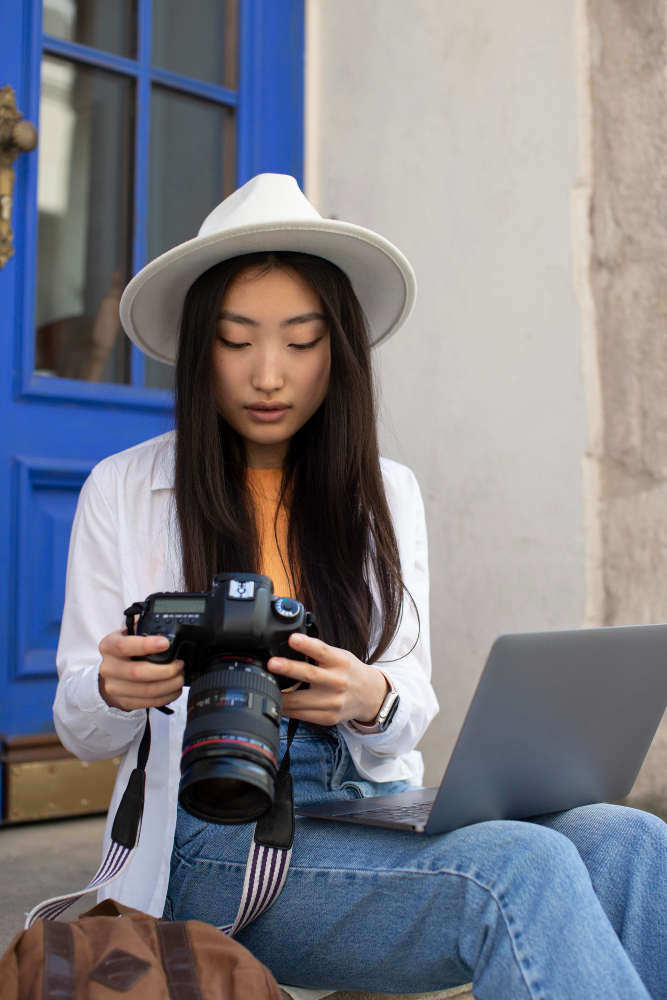 Children are used as subjects of many photographs. Advertisements depicting sick, homeless children will coerce people into donating money to a certain cause. Conversely, pictures of happy, adorable children will sell many different items. Also, parents can think of no better subject of photographs then their children. Therefore, parents haul their cameras everywhere their children go, just in case there is a memorable moment that they would miss if their camera were not in tow. However, many photographs of children are special, but only to the photographer and to their friends and family. There are several techniques that a photographer can use to make images captured of any child, memorable to the casual observer.
Children are used as subjects of many photographs. Advertisements depicting sick, homeless children will coerce people into donating money to a certain cause. Conversely, pictures of happy, adorable children will sell many different items. Also, parents can think of no better subject of photographs then their children. Therefore, parents haul their cameras everywhere their children go, just in case there is a memorable moment that they would miss if their camera were not in tow. However, many photographs of children are special, but only to the photographer and to their friends and family. There are several techniques that a photographer can use to make images captured of any child, memorable to the casual observer.
Top Tips on Taking Moving Photographs of Children
Get to know the child; it will help know what to say to them, to draw them out. Children, due to their trusting nature, will let most people into their little world within ten minutes or so, thus creating a bond that will be evident in the photographs.
Ask the child questions that are likely to stimulate their imagination. Good questions are things like: “What do you think of bugs?”, “Would it be more fun to be a giraffe or a bird?” or “What is your favorite game?”
Pay attention to the child’s responses and also to his or her physical movements when answering the questions. The images to be captured are those that reflect the child’s confidence. Perhaps the child laughs at the questions or seriously considers his or her answer. Either way, it makes a good photograph if the child looks whimsical or pensive. Look for ways to show the child’s creativity in the photographs that are captured. If he or she has a particular habit, such as twisting their hair when thinking, that is the making of a good photograph.
If your own child is the subject of the photographs, it should make taking memorable photos much easier. You know your child’s habits, quirks and their unique personality. Capture those special moments that show those things instead of making them smile for the camera in every photo. Of course, there should always be the requisite, “Say cheese!” photograph included in every batch of photographs taken of a child.
Observation Is the Key
After talking to the child, tell them you are going to get your camera ready. They quickly lose interest in things if they are not interacting with them, so you will be able to watch the child and see how he or she behaves when not being observed or interacted with. It is at this time that you should take pictures of the child being pensive, bored, quiet or any other way they are expressing their emotions at a certain moment.
If you are photographing your child, pretend while observing him or her that they are a stranger’s child. See if you notice things about your child that you had never noticed before. These are good things to photograph as well.
Allow The Child Their Own Environment
Using a telephoto lens will allow you to photograph the child, while not intruding on their personal space and into their thoughts. Giving the child space is the quickest way to get the child to do what he or she does most often, and therefore what they do best. This is what needs to be photographed. It will look natural and draw people in because it is natural and captures the innocence of the moment. Take photographs of the child at home, at the breakfast table, coloring, playing. If you capture these types of moments you are bound to find extraordinary images in ordinary moments of the child’s day.
Black and White Photography
Shoot some images in black and white, or use the computer to change full color to black and white. This will add drama to some of the pictures, and give an ordinary photo, an edge and a different message.
The most important thing to remember when photographing a child, or anyone for that matter, is to respect them as a person. Respect their space and their special world, as this is the best way to get them to let you in and capture the special moments.
When following these tips don’t be childish – joking, I like to kid too! 🙂
Ray Baker

